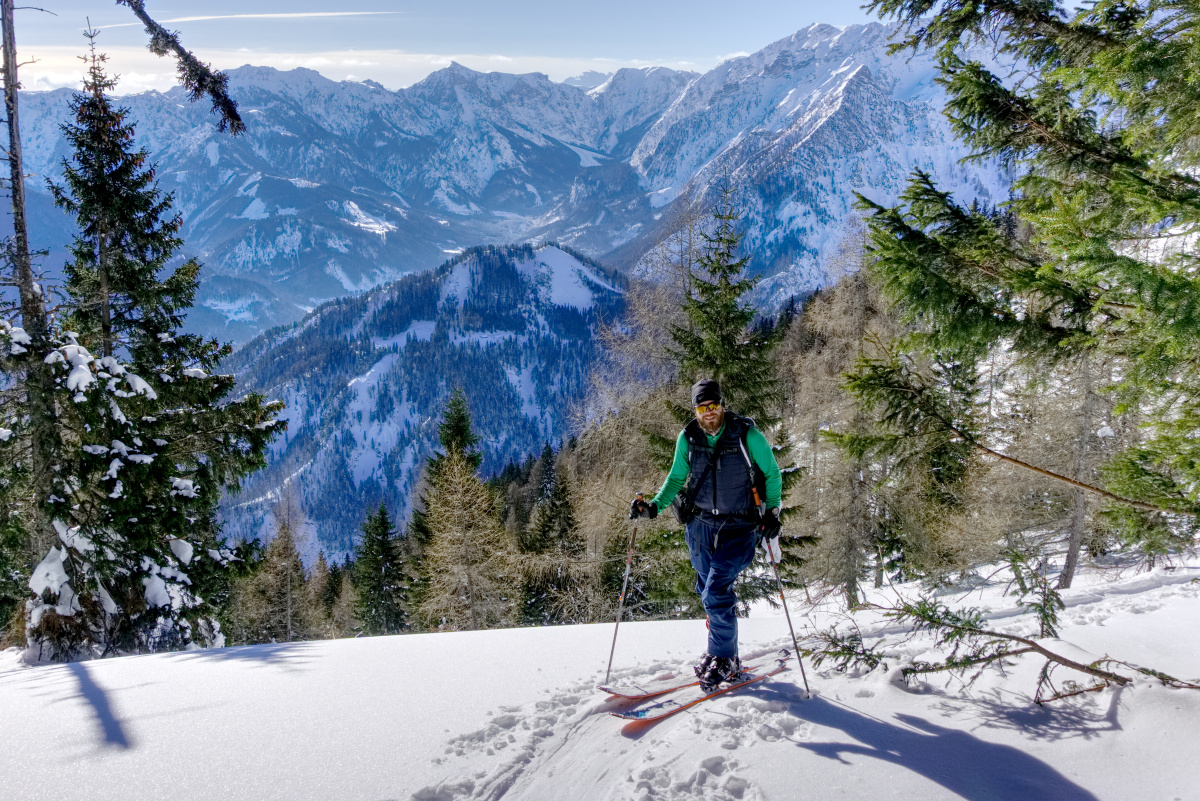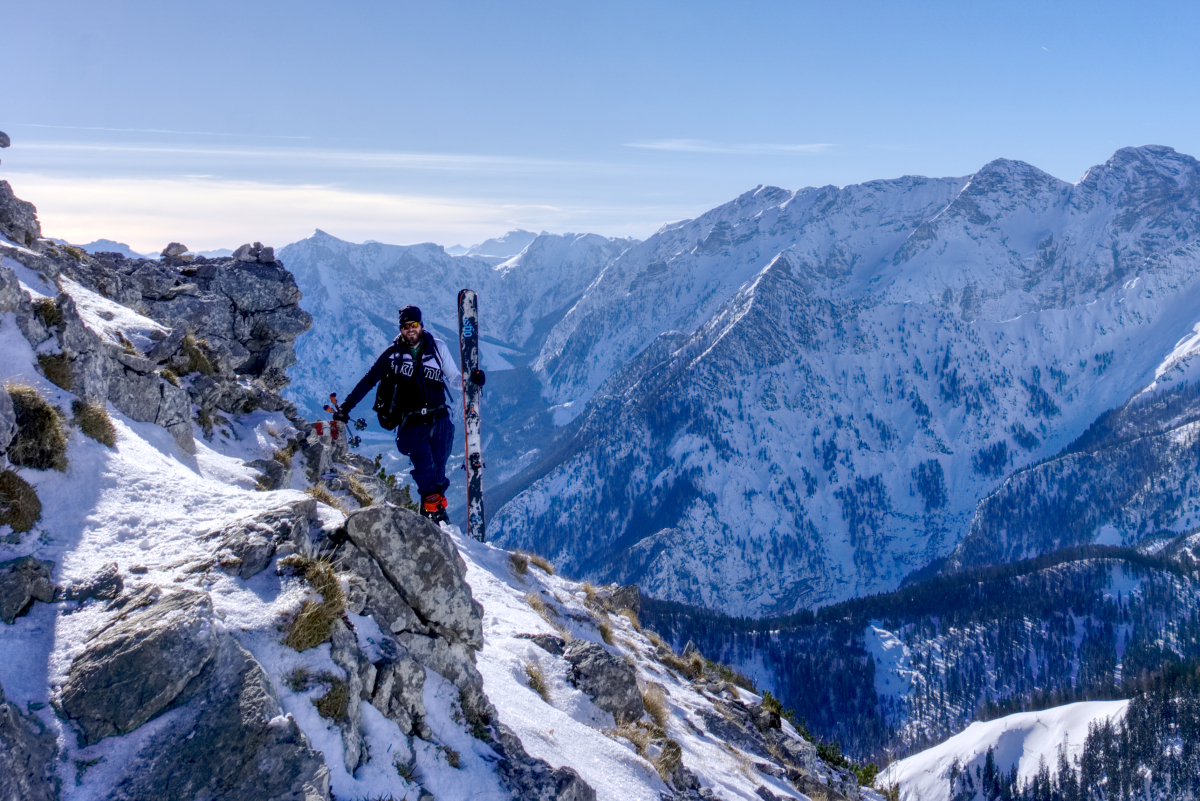I am very enthusiastic about Ogos Blacktooth, which I was already able to test ( here for the test ) and was very happy about the possibility to compare these skis. Thankfully Ogso provided the ski for me — but the review reflects my opinion and was not influenced by it.
The Diable and the Schwarztor have the same ski shape — in my case 186 cm length with 106 mm under the binding, a lot of “Early Taper” and Ogsos super rocker construction — but they are still different. And that is exactly what this article is about — what makes the difference between the two skis and for whom are they the best.

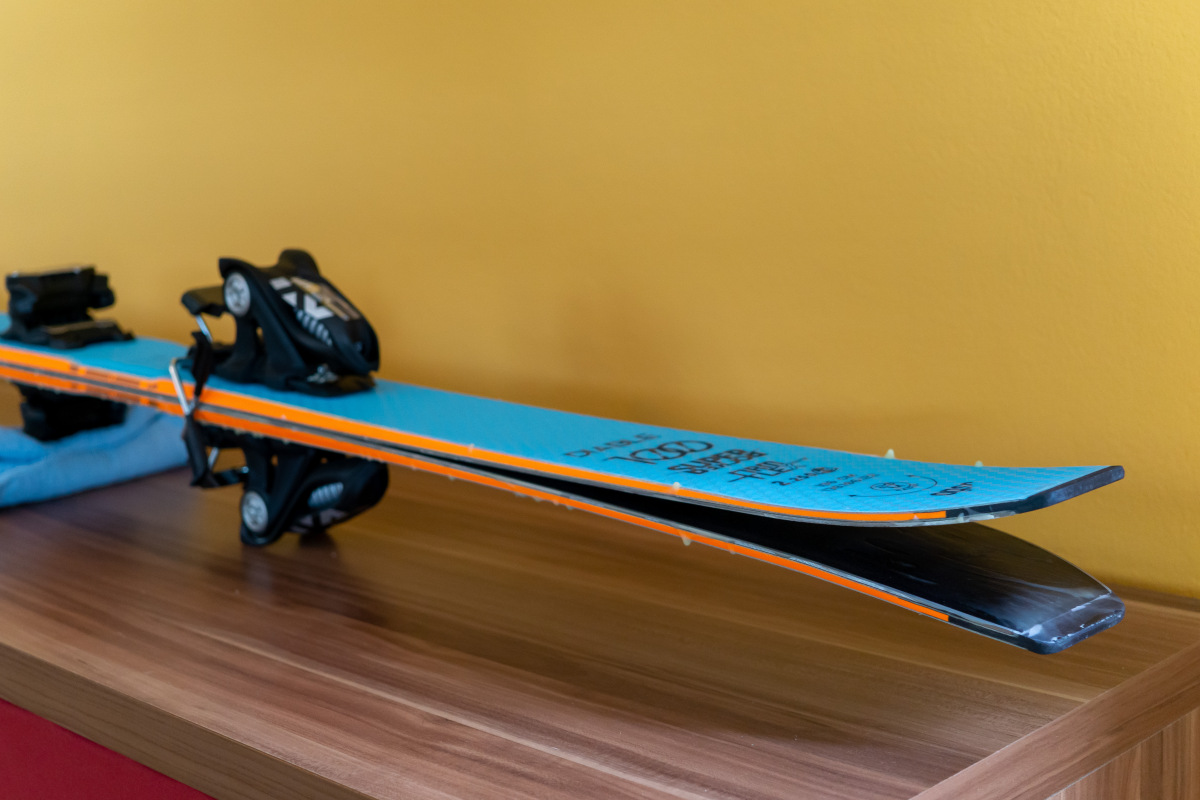
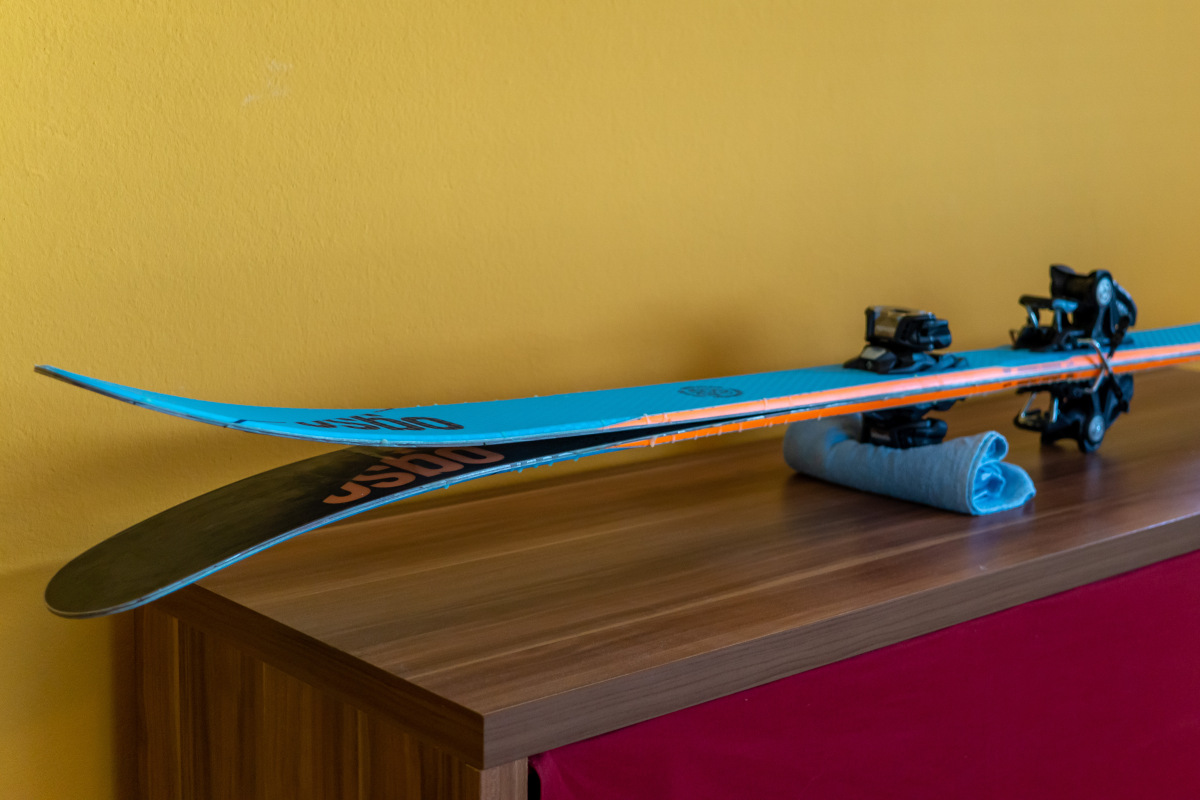
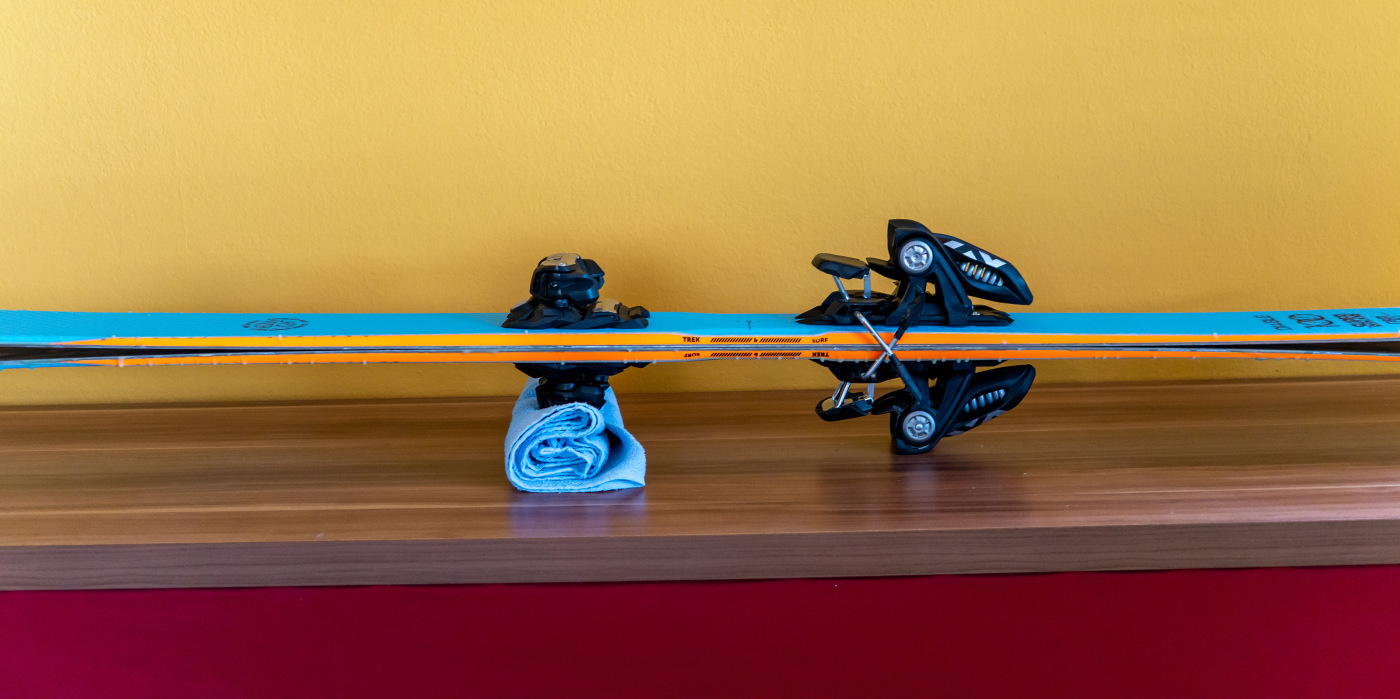
As so often it depends on the inner values! You just have to look at the skis to notice that the Diable is a lot more powerful. And when you take it in your hand, you realize that you hold much more skis in your hand than the black gate. Like the Black Gate, the Diable can be found in the 100 medium-width series and is built with Ogso’s Medium Light construction, which also results in a harder flex.
But first – that says the manufacturer:
THE BRAND NEW DIABLE 100S FACILITATES TURNS AND PERMITS YOU TO PIVOT. IT’S ENERGETIC AND VERSATILE.
The Diable ski ensures a balanced skiing, so you float smoothly and relaxed having an absolute exceptional experience. It gives an impression of being in the steep and in the very technical terrain or in the trees. At the same time you can go amazingly fast and stable.
-
- Length: 186 cm
- Weight: 2.25 kg
- Ski width: 106 mm under the binding
- Radius: 20 m
- Barrel length: 720 mm
Performance
What I already noticed after the first turns in fresh snow is the playful verve of the Diable. Unlike the Schwarztor, which needs a certain speed to get into driving, the Diable turns very consistent and playful even at relatively low speed. As soon as you put it on the edge, it’s almost as if the ski is motivated to drive short to medium-long fluid turns.
If you reach then steeper terrain and the pace is higher, the Diable is very quiet especially in medium-long turns in the snow and allows energy-saving and easy to control ski fun.
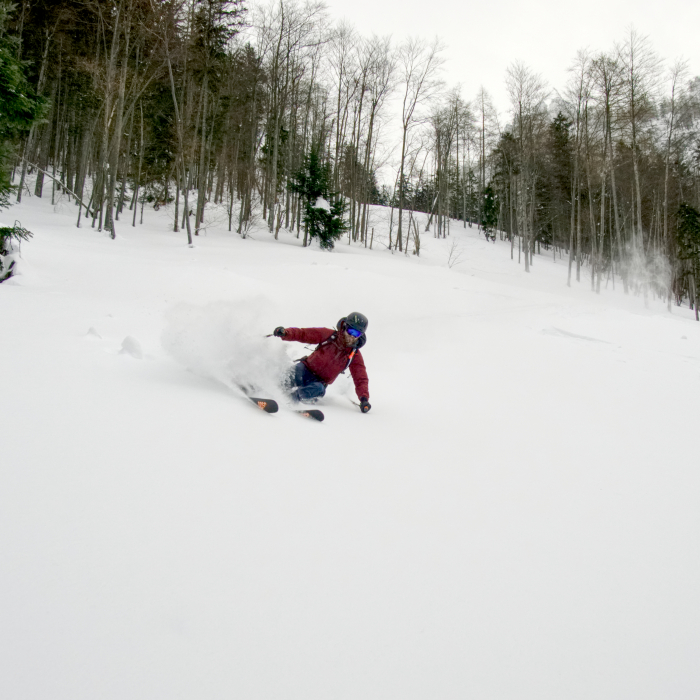
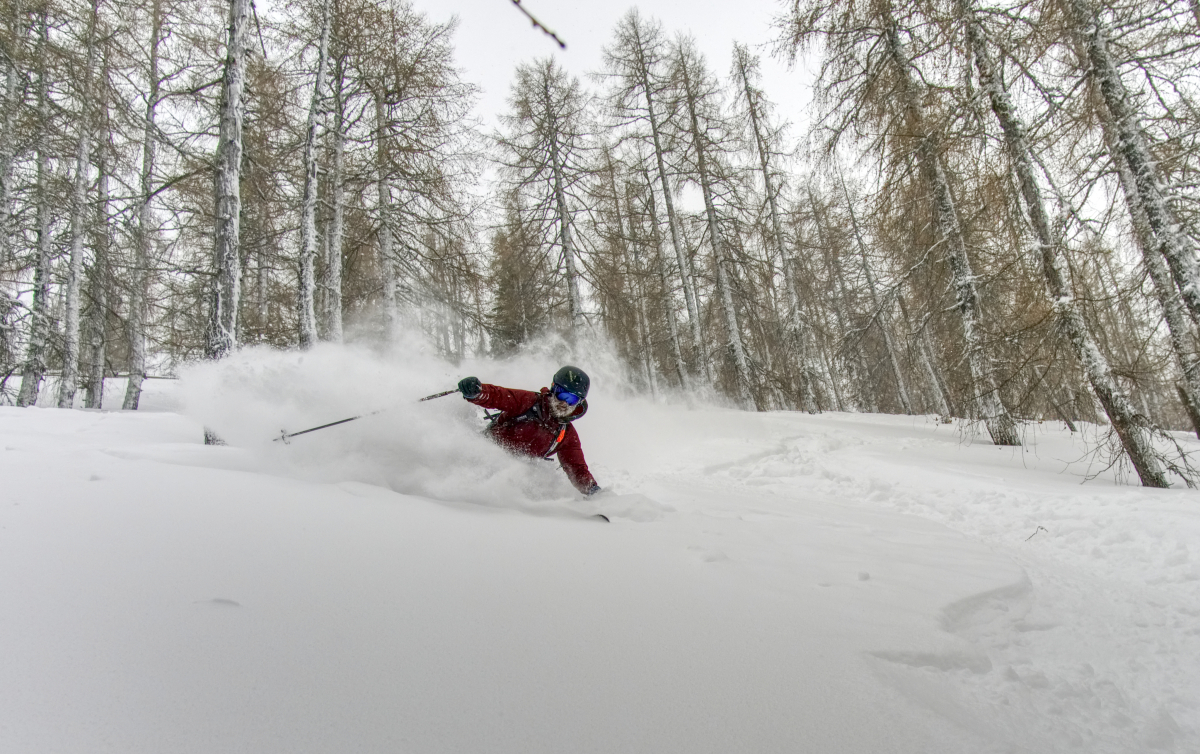
The Diable was fun for me, of course, in the Powder – with 106 mm under the binding and the Superrocker construction, he is, in the truest sense of the word, made for it. He also masters the change from one type of snow to the other suan, because he also floats, for example, over rutted slopes or broken wind-pressed slopes and brings with his weight and the necessary smoothness to not be thrown off track.
Certain restrictions bring the construction, similar to the Schwarztor, with it. On icy or hard slopes is missing, due to the average width and high rocker share, simply the edge grip. However, as soon as the slopes become softer and more craggy, which is the case in the spring, the Diable scores points with these qualities again – while of course it does not provide the same slope performance as a narrower all-mountain ski, which is probably also better carving properties brings.
The Diable is quieter compared to the Schwarztor, somewhat more predictable and more revving – which is what you buy at the ski. What they both have in common is that they do not demand much from the driver and are easy to handle.
I have not spent as many days on the Diable as on the Schwarztor or the Cosmique ( here for the test ), but I also assume similar durability of the rubber and the edges. Especially at the Schwarztor they have already had to do a lot without any problems.
Conclusion
The Diable and the Schwarztor are definitely designed for the off-piste area and also feel most comfortable there – especially on Powdertagen both are a pleasure.
The Diable offers in contrast to the very light Schwarztor more downhill performance and just in the downhill more versatility. It is suitable for anyone who is looking for a well-balanced and above all revving or playful all-purpose freeride ski.
Short ascents with the skis on the backpack can also be mastered with the Diable to reach untracked terrain. However, I would leave out the ascent function in the binding choice. The Diable is for me a downhill-oriented ski on which you should mount a decent freeride binding.
A freeride frame binding would be a good alternative to a freeride binding without a walking mechanism. There are also other options that allow walking with a purely departure-oriented binding – such as the modification of Cast for the Look Pivot 18 or the Daymaker tour adapter. These can make a pure downhill ski without touring binding, a very versatile package with which it can also be toured for short distances – eg away from the lift – without having to sacrifice safety or performance.
